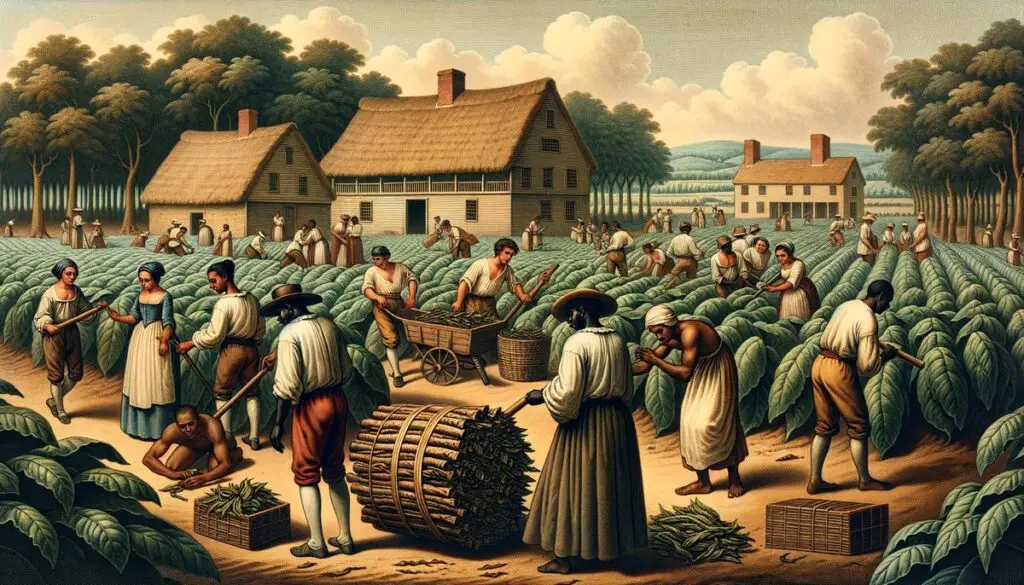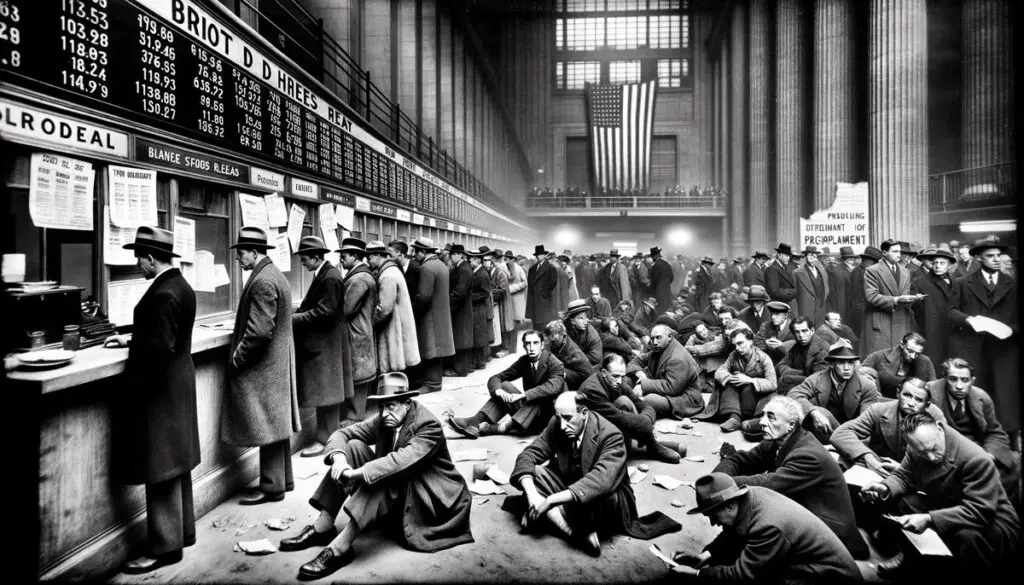Slavery in the United States has left an indelible mark on the fabric of the nation, shaping its history, culture, and society in profound ways. From its early inception in the 17th century to the battle for its abolition and the ongoing struggle for equality, the legacy of slavery spans hundreds of years, influencing multiple aspects of American life. This article seeks to explore the complex origins, daily realities, and lasting impact of slavery, shedding light on the resilience of those who lived through it and the continuing effects on modern America.
The Origins of Slavery in the United States
Slavery in the United States began in the early 17th century when British colonists in Jamestown, Virginia, in 1619, bought 20 African slaves from Dutch traders. The institution of slavery was not originally the primary labor system planned for the colonies, but as European colonists struggled to cultivate the new land amidst labor shortages, they increasingly turned to African slaves as a more permanent, profitable labor solution. This marked the beginning of a complex institution rooted in racial and economic exploitation.
Initially, the colonies inherited the British system of indentured servitude, where people worked for a period to pay off their passage to the New World. However, as the demand for labor grew, especially in the labor-intensive tobacco and later cotton plantations in the South, the reliance on servitude gave way to slavery. Unlike indentured servants, enslaved Africans were not considered people but property that could be bought, sold, and owned for life. This shift was driven by the need for a stable labor force and the belief that Africans, deemed racially inferior by the colonists, were suited to work in the harsh conditions.
Legal frameworks evolved to institutionalize slavery, differentiating it from indentured servitude. Laws were passed defining the status of Africans as slaves for life, and this status was inherited by their children, a concept known as chattel slavery. This created a perpetual cycle of enslavement based on race. Slavery spread rapidly in the southern colonies where the economy depended heavily on agriculture.
The transatlantic slave trade fueled the growth of slavery, with millions of Africans forcibly taken from their homes and transported to the Americas under brutal conditions. Once in the United States, they were sold at auctions and forced to work on plantations. Slave labor was a critical part of the success of the colonial and early American economy, especially in the production of crops like tobacco, rice, and cotton.
Over time, the institution of slavery deeply divided the United States, culminating in the Civil War. The North, where slavery was less economically integral, favored abolition, while the South vehemently defended the institution as vital to its economy. The war ended in 1865 with the defeat of the Confederate states and the abolition of slavery in the United States through the 13th Amendment to the Constitution.
The legacy of slavery has had a long-lasting impact on American society, shaping racial dynamics and social structures. The inception of slavery in the U.S. was a complex process influenced by economic, legal, and social factors that entrenched racial inequality into the fabric of American life.
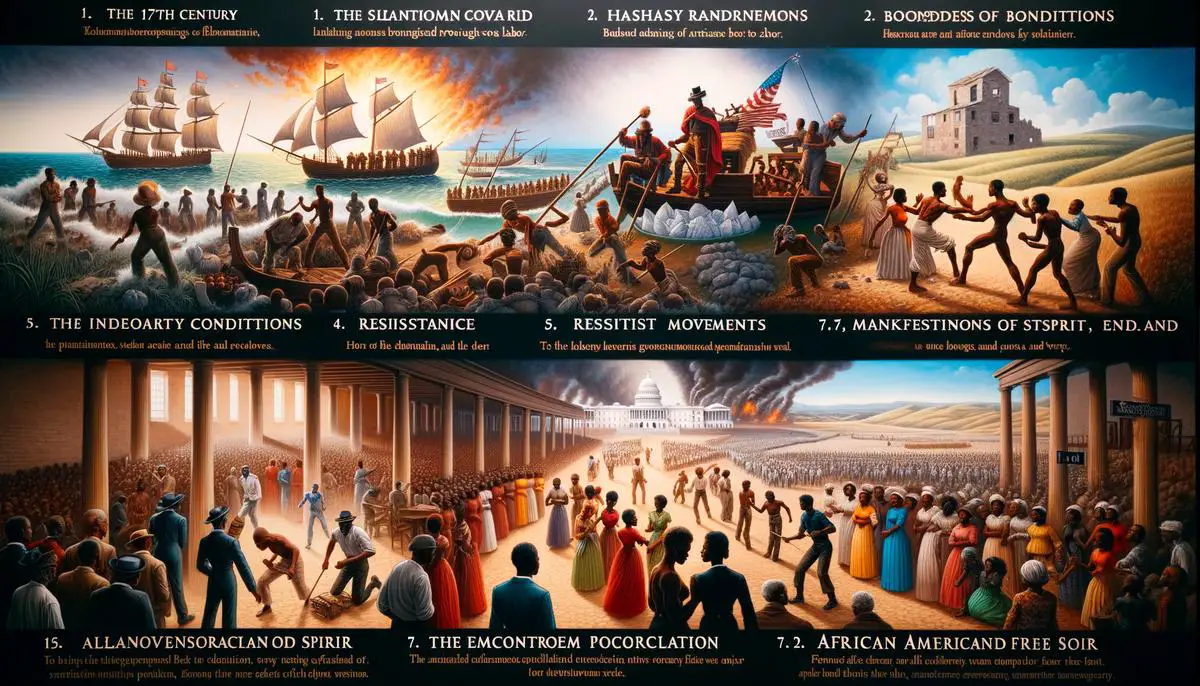
The Daily Life of an Enslaved Person
The daily life of enslaved individuals in America was marked by relentless hardship and a systematic denial of basic human rights. The experiences of the enslaved were varied, largely depending on the type of labor they performed and the attitudes of their enslavers. However, all endured the cruel reality of being treated as property rather than people.
Enslaved individuals working on plantations, which were common in the Southern states, faced grueling schedules. They were forced to work from sunrise to sunset in the fields, cultivating crops like tobacco, rice, and, most predominantly, cotton. The cash crop economy of the South demanded intense labor, often in harsh conditions. Summers were brutally hot, and winters could be unforgivingly cold, yet the enslaved had little respite and were expected to maintain high levels of productivity regardless.
Domestic slaves had slightly different routines but were similarly deprived of freedom. They worked in their enslavers’ homes, performing tasks such as cooking, cleaning, and childcare. While some might think domestic slaves had it ‘easier’ due to working indoors, they were subject to constant surveillance and could face punishment for any perceived slight or mistake. Moreover, being in close proximity to their enslavers did not safeguard them from abuse, both physical and psychological.
The housing provided to enslaved people was often substandard. Small, crude cabins, sometimes with dirt floors and little to no furniture, were common. Privacy was virtually non-existent, and families were frequently separated through sale. Despite these conditions, enslaved individuals created communities and cultures of resistance. They developed a spiritual and musical heritage that blended African traditions with their experiences in America, giving birth to spirituals that spoke of both earthly suffering and the hope for liberation.
Education for the enslaved was mostly prohibited, as many enslavers feared that literacy would encourage rebellions. There were, however, instances of enslaved individuals learning to read and write in secret, demonstrating the relentless human desire for knowledge and freedom. Such acts of defiance were risky, and punishment could be severe.
Punishments for the enslaved ranged from beatings and mutilation to being sold away from family members. The threat of sale was one of the most powerful tools in the enslavers’ arsenal, used to instill fear and compliance. The practice cruelly separated children from parents, spouses from each other, and siblings from one another, often with no hope of reunion.
Despite the oppressive system designed to strip them of their dignity and humanity, enslaved individuals found ways to resist. Beyond secret education, this included work slowdowns, feigning illness, sabotage, and escape attempts—a testament to their enduring spirit and the pursuit of freedom.
The daily life of the enslaved was a cycle of labor, suffering, and resilience. Though the institution of slavery sought to reduce them to mere property, the enslaved fought to maintain their identities, forge connections, and nurture a culture that would outlive the inhuman system that bound them. Through their struggles and their endurance, they laid the foundations for future generations to build upon in the quest for justice and equality.
In sharing the realities of daily life for the enslaved, it’s critical to remember that these were individuals with hopes, dreams, and an unbreakable spirit. Their stories, though marked by brutality and injustice, are also narratives of resistance, survival, and the profound strength of the human spirit to overcome unimaginable adversity.
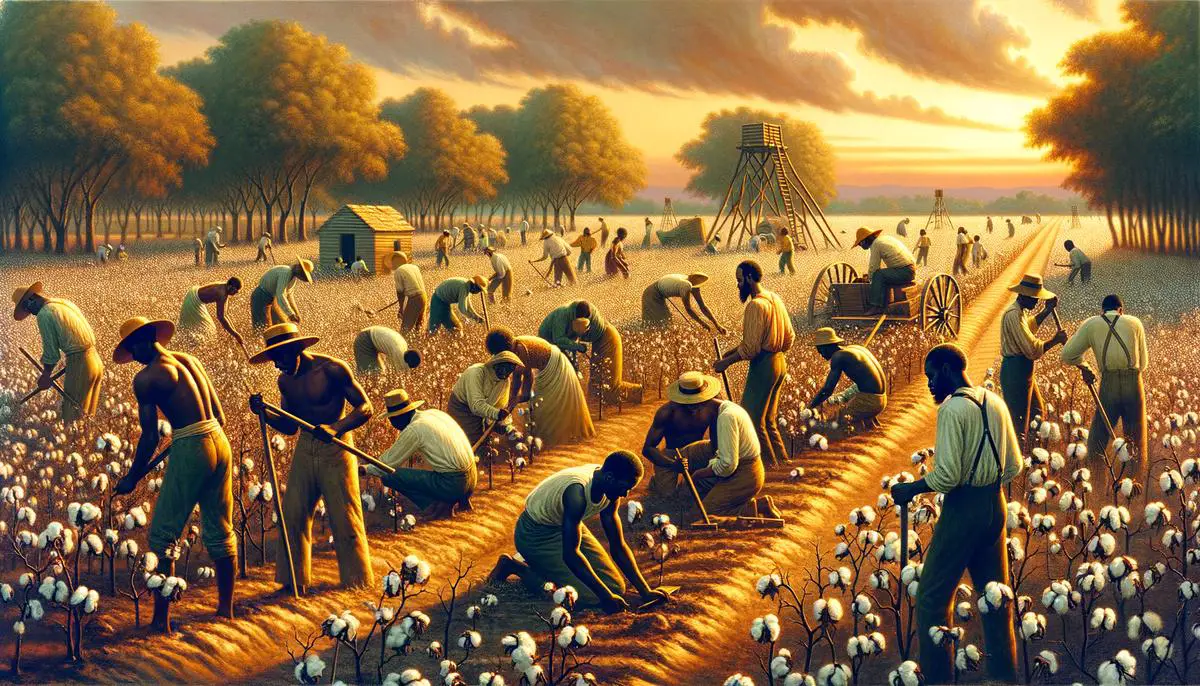
Abolitionist Movements and the Path to the Civil War
The abolitionist movement in America was a powerful force that intensely stirred the nation and significantly hastened the advent of the Civil War. Originating in the late 18th century but gaining substantial momentum in the early 19th century, abolitionists called for the immediate end to slavery, viewing it as a moral abomination.
- They employed a variety of tactics to persuade both the public and political leaders, ranging from publishing fiery literature and personal narratives of enslaved individuals to organizing rallies and forming political parties. This movement did not only aim to emancipate slaves but also sought to integrate freedmen as equal members of society.
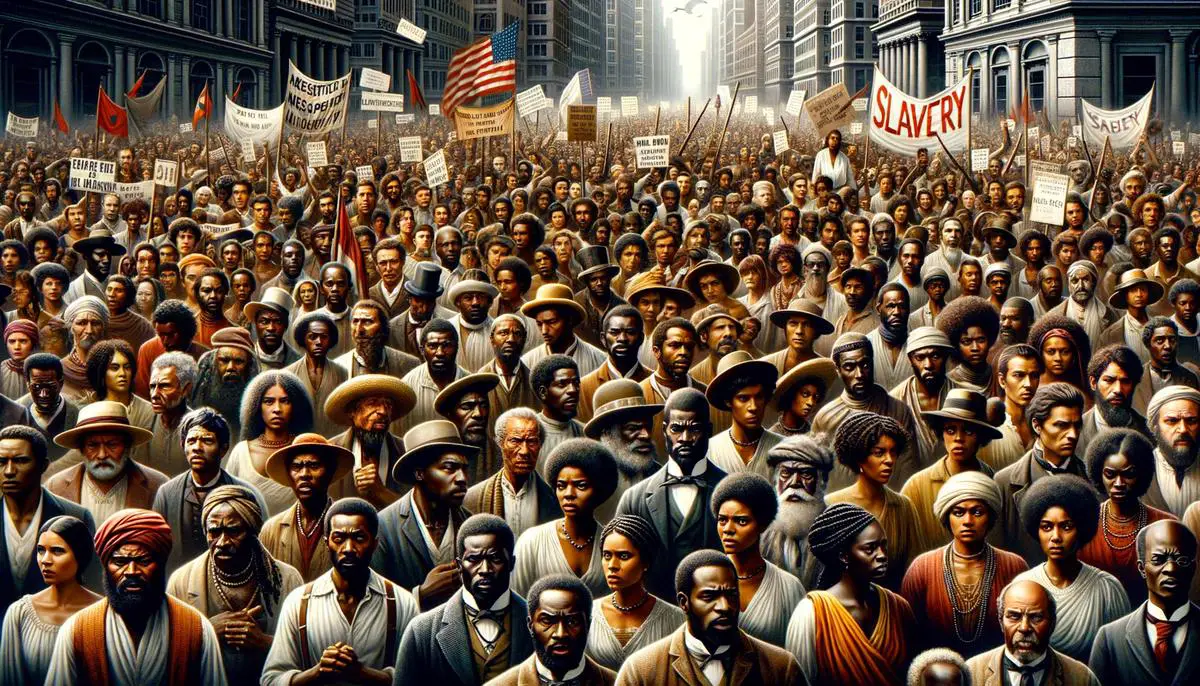
The Legacy of Slavery in Modern America
The legacy of slavery in the United States is a complex and enduring tapestry, woven into the fabric of the nation’s history, culture, and social structure. Despite the passage of over 150 years since the end of the Civil War and the abolition of slavery, its shadows linger in various forms, influencing the present day in nuanced and overt ways.
One of the most visible legacies of slavery is the ongoing struggle for racial equality and civil rights. The end of slavery did not equate to the end of racial discrimination; instead, it morphed into different forms such as Jim Crow laws, which enforced racial segregation and disenfranchised African Americans. The civil rights movement of the 1950s and 1960s made significant strides in fighting these injustices, but racial disparities and systemic racism persist, affecting African Americans in areas like employment, education, housing, and the criminal justice system.
The economic repercussions of slavery are profound and far-reaching. The wealth generated by slave labor laid the groundwork for America’s emergence as a global economic powerhouse. However, African Americans were systematically excluded from this prosperity. Even after emancipation, discriminatory practices like redlining and employment discrimination barred many from homeownership and well-paying jobs, creating an enduring wealth gap. Today, this legacy is evident in the stark disparities in wealth, income, and economic opportunity between white and Black Americans.
Culturally, the impact of slavery has been both destructive and constructive. It attempted to strip enslaved people of their identities and heritage, yet it also led to the creation of a rich African American culture deeply ingrained in the American fabric. From music and food to language and religious practices, African Americans fostered a distinct culture as a means of survival and resistance. This culture has profoundly influenced American society, even as it emerged from the brutal oppression of slavery.
Socially, the legacy of slavery has contributed to complex dynamics of race relations in the United States. Stereotypes and prejudices rooted in the era of slavery still poison perceptions and interactions. While progress has been made, the journey toward true equality and understanding is ongoing. Events that highlight racial tensions and injustices serve as stark reminders that the scars of slavery are not yet fully healed.
The criminal justice system presents another avenue through which the legacy of slavery is perpetuated. Mass incarceration disproportionately affects African Americans, a phenomenon some scholars link directly to the historical control and surveillance of Black populations during and after slavery. Practices like racial profiling and the war on drugs have disproportionately impacted African American communities, raising critical questions about equality and justice in America.
Education disparities also reflect slavery’s long shadow. Historically, laws prohibited the education of enslaved persons, fearing that literacy would lead to unrest and rebellion. Although such laws are long gone, educational inequality persists, often along racial lines, with African American students more likely to attend underfunded schools. This inequality hampers the ability of Black communities to overcome economic and social challenges, perpetuating a cycle of disadvantage.
In conclusion, the legacy of slavery in the United States is a multi-faceted phenomenon affecting various aspects of American life. From economic disparities to cultural contributions, the echoes of slavery are a testament to a painful past and a challenging present. Understanding and addressing this legacy is essential in moving toward a more equitable and just society. As America continues to grapple with these issues, the hope is for a future where the nation fully reconciles with this part of its history, acknowledging the deep scars left by slavery while striving to heal and build a truly inclusive society.
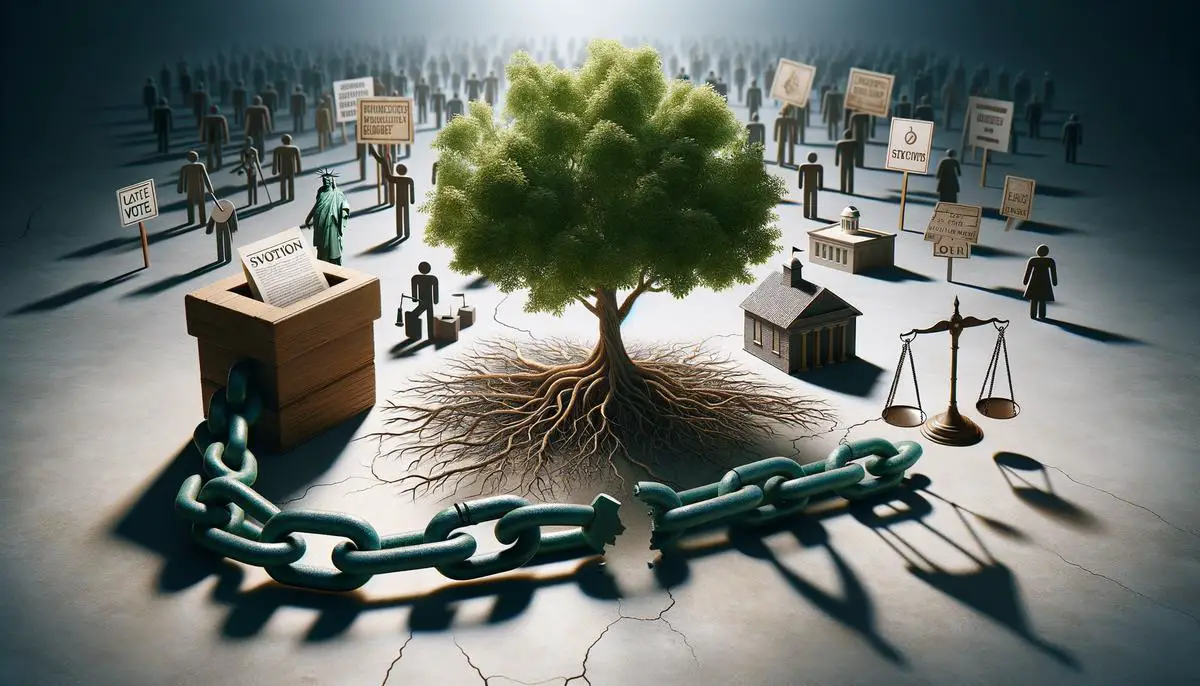
The echoes of slavery continue to reverberate through American society today, serving as a sober reminder of a dark and painful past. Recognizing and understanding this aspect of history is crucial for fostering a more inclusive and equitable future. As we reflect on the resilience of those who endured the cruelties of slavery and the persistent fight for justice and equality, it becomes clear that the legacy of slavery is not just a chapter in history books but a continuous influence that requires our attention and action. By confronting this legacy head-on, we can work towards healing the wounds of the past and building a society that truly reflects the ideals of freedom and equality for all.
- Julius Caesar Adaptations - April 15, 2024
- Declaration of Independence - April 15, 2024
- US Civil War Analysis - April 14, 2024

